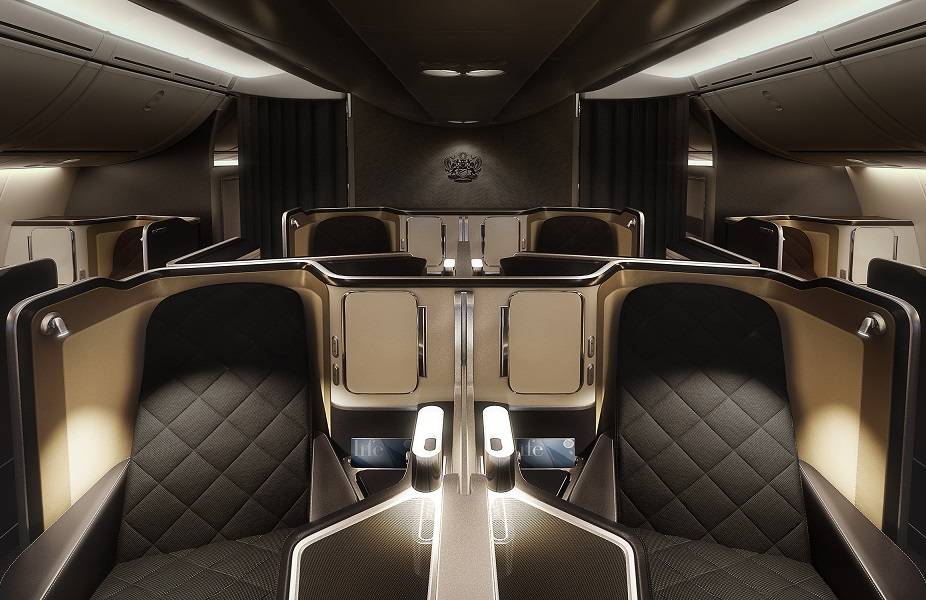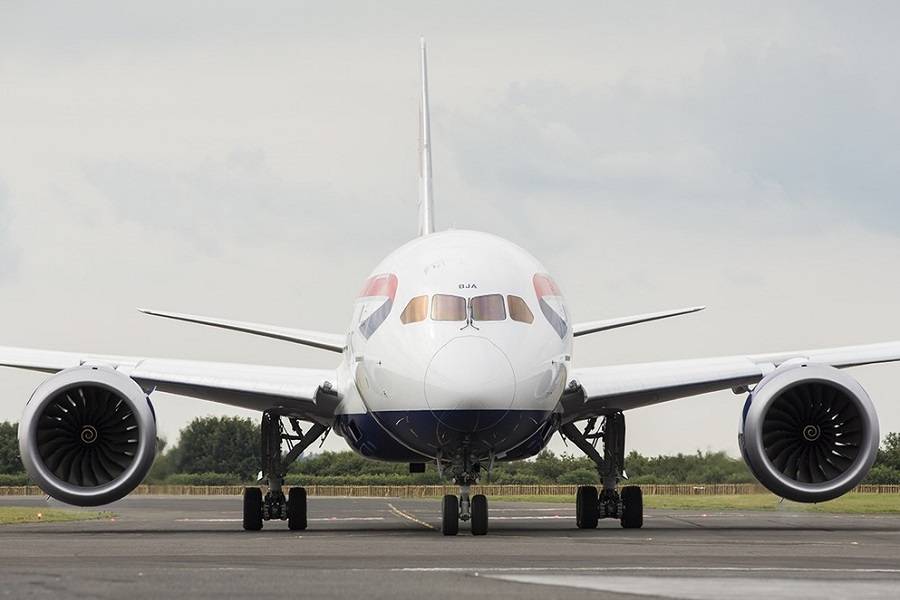Cabin crew in a British Airways 787 had to deal with an in-flight fire incident, when a passenger’s phone was crushed by the electric mechanism of a seat.
This in-flight fire incident happened on October 1st, last year. The British Air Accident Investigation Board (AAIB) released its report on it today. British Airways flight BA-206 departed the previous evening from Miami in Florida, USA, bound for London Heathrow in the UK. The aircraft was a Boeing 787-9, registration G-ZBKF. Since this was during the pandemic, there were only 53 passengers and 10 crew on board.
The in-flight fire incident happened as the aircraft was cruising at 41,000 feet. The flight crew made an announcement, letting passengers know that they would soon start their descent, arriving in London in about 40 minutes. The announcement woke a passenger using a flat-bed seat, near the front of the aircraft. The passenger reconfigured the electrically-operated seat from flat to a more upright position, before leaving it momentarily.

Shortly thereafter, a cabin crew member noticed a strong, sulphur-like odour coming from the seat. She quickly got the attention of more crew. There was a charging cable in one of the seat’s sockets. From there it went down a gap, on the seat’s side. Both crew members heard a hissing sound, as smoke came from the seat. During this in-flight incident they also saw what seemed like the orange glow of a fire.
The cabin crew in this in-flight incident immediately retrieved a BCF (Halon) fire extinguisher. They switched off power to the seat and pulled back some padding, exposing the burning device, trapped in the mechanism. The crew gave several bursts with the fire extinguisher onto the device, that seemed to work.
Flight Crew’s Reaction To The In-Flight Fire Incident
Meanwhile, the pilots had noticed the acrid smell from the cockpit. Cabin crew soon notified them about the in-flight fire incident and their actions thus far. There was a third pilot, who went into the cabin to assist. The remaining pilots started to examine their diversion options. By this point, the smoke had cleared and the cabin crew could confirm that they were dealing with a mobile phone.

The phone wasn’t radiating much heat, but a cabin crew member with a fire extinguisher stayed close to it. There were no secondary heat sources. By then, the aircraft was just 20 minutes away from landing, so the flight crew decided to carry on. They made a PAN call, alerting ATC of the in-flight incident and asking that fire services meet them after landing. The aircraft made an uneventful approach and landing.
The AAIB report into this in-flight fire is only 7 pages long, reflecting the limited scope of the incident. However it makes several observations, and a recommendation. It also calls for a safety action. Perhaps the most telling observation is that this is far from a unique incident. There have been 166 previous reports of PEDs (Personal Electronic Devices) becoming trapped in passenger seats in the last five years. And 42 of them resulted in a fire or smoke in the cabin.
The report says that the seat’s design aimed to minimize the possibility that PEDs could become trapped in the mechanism. However, removing that risk completely, is challenging. Also, phones and other devices are getting smaller, and come with increasingly higher-capacity batteries. Passengers carry more devices, too.

Missing Standards?
More worryingly, the AAIB report highlights that there are no standards or best-practice guidelines for seats, to minimize such in-flight fire incidents. This applies to both EASA (European) and FAA (American) authorities, as well as CAA’s in the UK. But this is not an unusual occurrence, so companies take it into consideration in their designs.
British Airways and other airlines make announcements, specifically to avoid such in-flight fire incidents. They tell passengers to take care not to drop their phones in their seats. And if they do, to NOT move the seat, but instead inform cabin crew. They also ask that passengers do not charge their electronic devices while they are sleeping.
The AAIB report’s safety recommendation calls for CAA to require that seat design minimizes these incidents. But before this can happen, there need to be standards and/or practices, for seat design that minimizes these risks. This is AAIB’s Safety Action, addressing SAE (a global association of engineers) to do so.

We recently saw that a pallet full of new phones ignited at an airport ramp, shortly before crews would load it on a freighter. Both these events highlight a problem. We don’t know if such fire incidents, in-flight or on the ground, happen because of the devices themselves or their handling. Devices already installed on aircraft undergo rigorous testing, to ensure their safety.
Our phones do not undergo such testing. Phone makers do test them, to ensure the batteries are safe, even with a bit of abuse. But they cannot really test what happens when a mechanism crushes them! Until they do, or until seats absolutely cannot make a phone disappear, we should probably take care to not lose our phones…




2 comments
Ross Elliot
Surely not too difficult to design a (kevlar?) retracing mesh into the seat design to keep small items (and fingers) out of harms way?
Andre T
There have been at least one crash due to damaged lithium batteries catching fire. UPS 747 freighter crashed 2010 due to fire started by damaged lithium batteries in cargo. Catch other batteries on fire. Scary situation. They burn very hot. Mayday has episode about it. Here is article.
“UPS 747 Crash Highlights Lithium Battery Danger | Flying” https://www.flyingmag.com/news/ups-747-crash-highlights-lithium-battery-danger/
This is of concern for the push to go to electric propulsion aircraft. Is there enough data and regulation to prevent in-flight battery fires?
PS: this article had a number of grammar errors. Editing/proof reading?